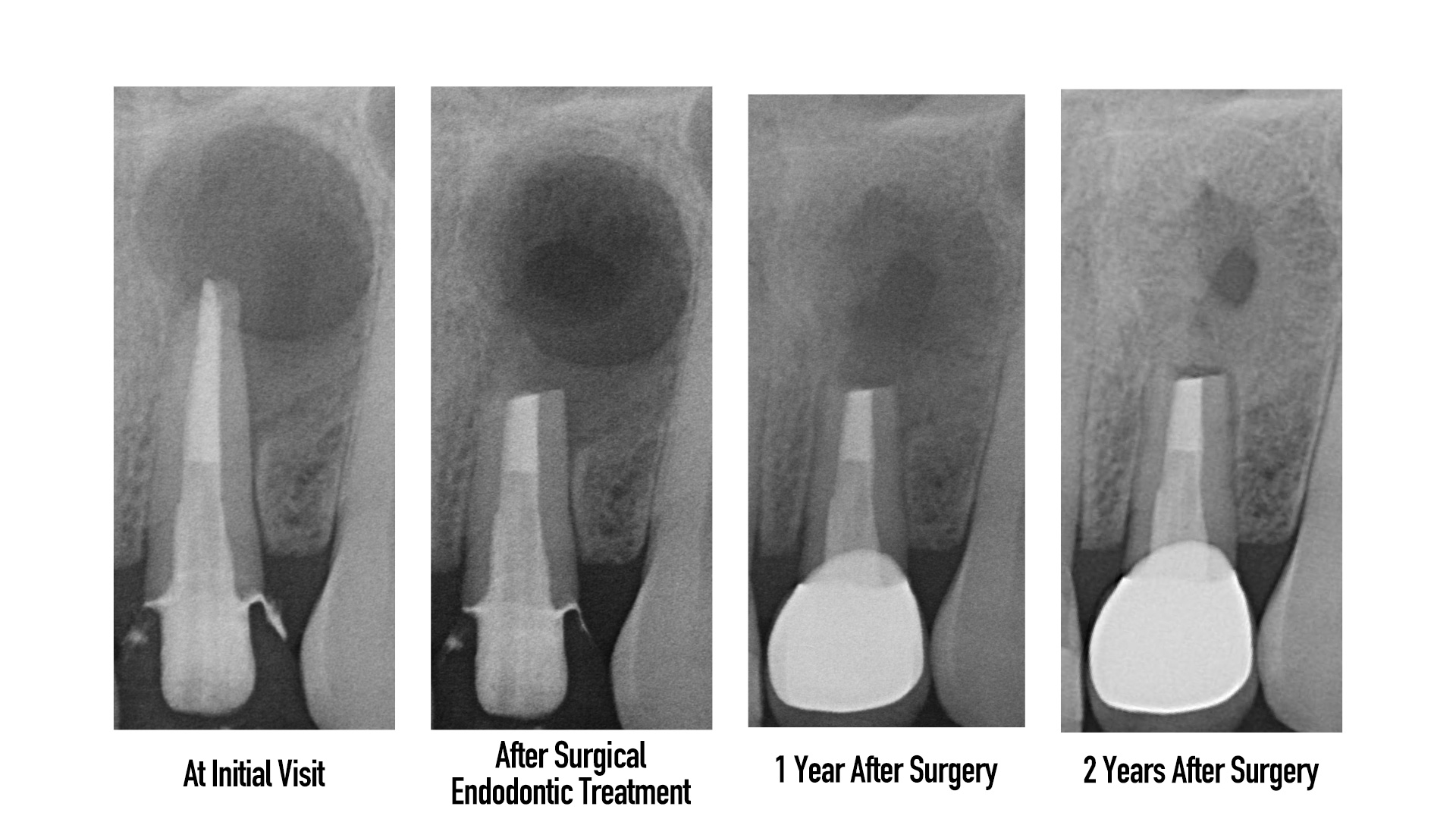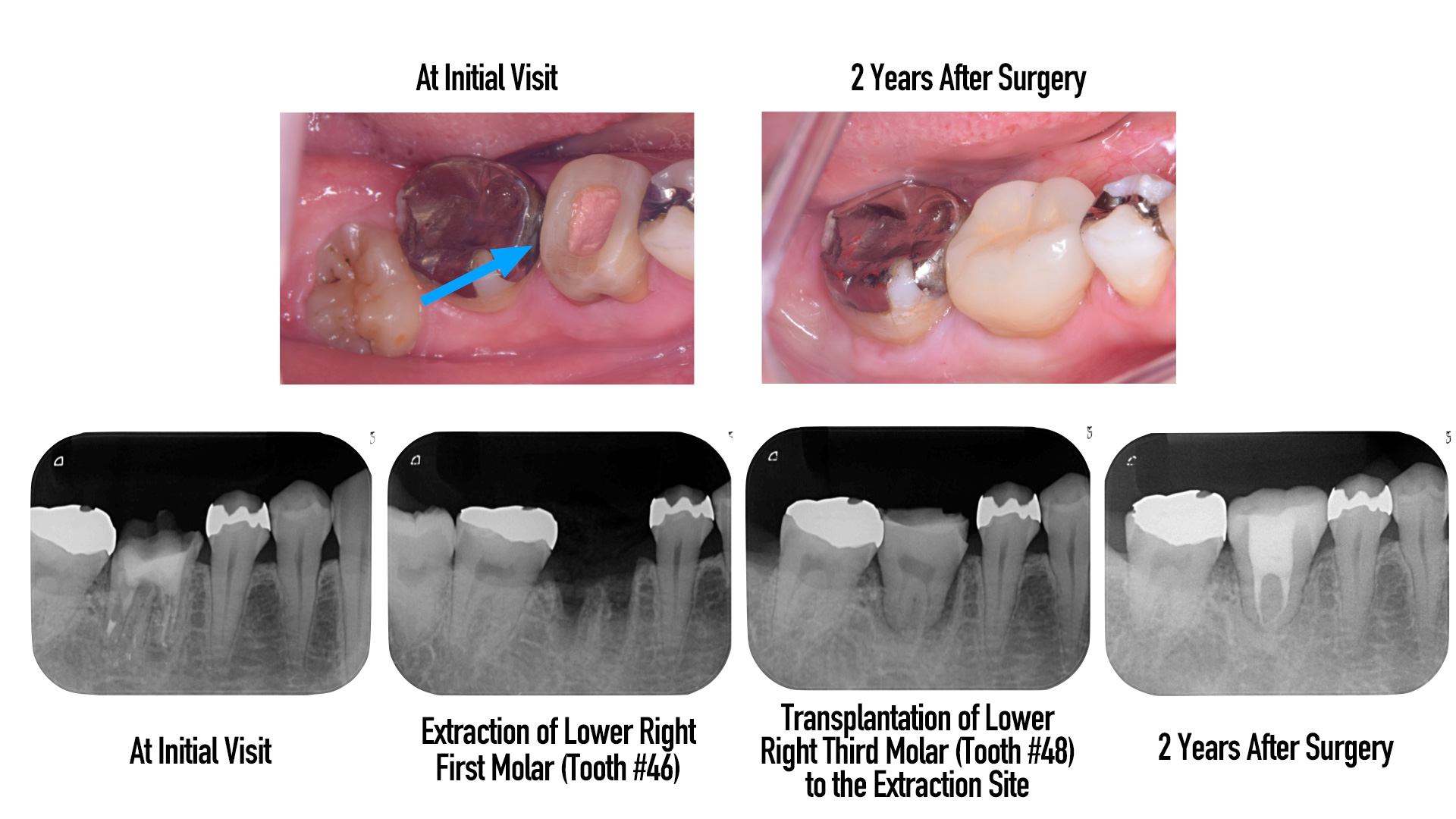Apicoectomy
Apicoectomy is a treatment method that involves removing the source of infection at the tip of the root and filling it with medication. It is performed when conventional root canal treatment is not effective or cannot be performed for some reason.
Benefits: There is a possibility of restoring the function of the tooth by preserving your own tooth.
Drawbacks: Surgery is required, which may involve swelling and pain. Depending on the situation, extraction or treatment interruption may be necessary. Additionally, it is not applicable to all teeth, and other treatment methods may be more suitable depending on the shape of the tooth and the extent of the infection.

Intentional Replantation
Intentional replantation is a treatment method where, if there is a source of infection at the tip of the root, the tooth is temporarily extracted, the source of infection is removed, and the tooth is reinserted. It has the same treatment purpose as apicoectomy but is performed in areas where apicoectomy is not applicable.
Benefits: There is a possibility of restoring the function of the tooth by preserving your own tooth.
Drawbacks: Surgery is required, which may involve swelling and pain. Depending on the situation, extraction or treatment interruption may be necessary. There is a possibility of the tooth breaking during extraction, the crown being damaged, the replanted tooth not returning, or root resorption occurring.
Autogenous Tooth Transplantation
Autogenous tooth transplantation is a treatment method where a tooth that needs to be extracted (such as a wisdom tooth) is transplanted to a location where a tooth has been lost. It allows for the restoration of appearance and function with your own tooth.
Benefits: It allows for the restoration of appearance and function with your own tooth.
Drawbacks: Surgery is required, which may involve swelling and pain. Depending on the situation, extraction or treatment interruption may be necessary. There is a possibility of the tooth breaking during extraction, the tooth not returning during transplantation, or root resorption occurring.

Risks Associated with Treatment
There may be temporary increased pain due to the effects of treatment during root canal therapy.
Frequently Asked Questions from Patients
Our specialists answer questions frequently asked by patients.
1. What kind of pain is there before treatment?
A: Pain that requires root canal treatment includes cases where it hurts despite treatment at other clinics...
2. What kind of pain is there during treatment?
A: We take care to minimize pain as much as possible during treatment...
Reasons for Our High Treatment Success Rate
We introduce the equipment used for precise treatment.
1 Aim to preserve the nerve as much as possible

To live with your own teeth for as long as possible...
Our clinic considers this in our treatments.
2 To cure means to leave a usable tooth

We always use a microscope.
We also use a rubber dam for delicate treatment.
3 To use your own teeth for a lifetime

Diagnosis of [extraction] at other clinics...
Our clinic might be able to save it.








